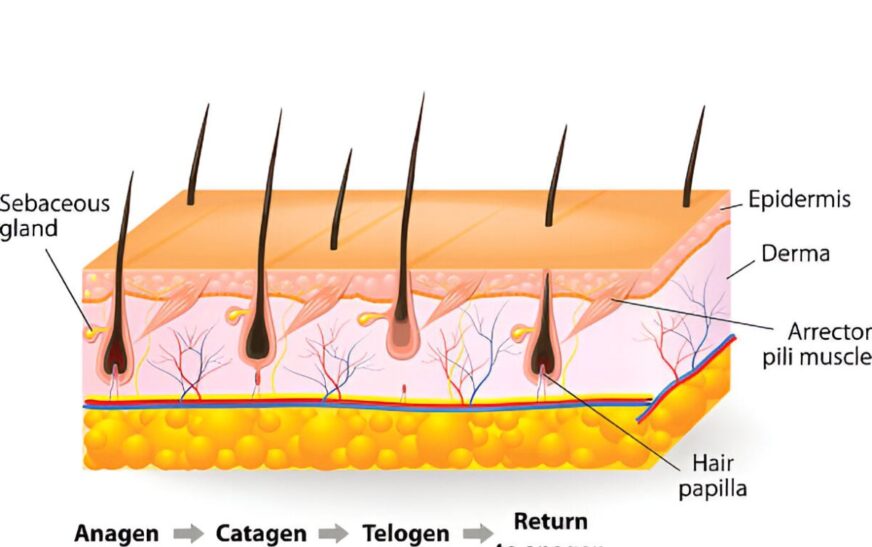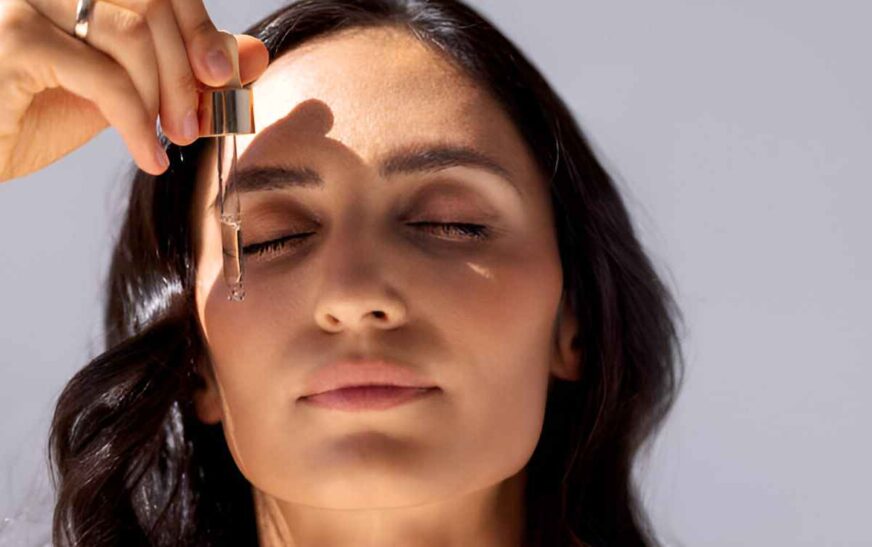You know that feeling when you’re staring in the mirror, willing your hair to grow faster? Yeah, I’ve been there too. Whether you’re recovering from a bad haircut or just dreaming of longer locks, understanding how fast hair grows can save you from a lot of frustration and unrealistic expectations.
After years of navigating my hair growth journey (and trust me, there were some dark days), I’ve learned that knowledge truly is power when it comes to hair. So let’s dive into everything you need to know about hair growth rates, what’s normal, and how you can work with your hair instead of against it. Understanding your hair growth can give you a sense of control and confidence in your hair journey.
The Truth About Hair Growth Speed
Here’s what you want to know: most people’s hair grows about half an inch each month. That means you’re looking at roughly 6 inches per year if everything goes smoothly. But here’s the thing – and this might surprise you – not everyone’s hair grows at the same pace.
Some individuals are lucky enough to see up to three-quarters of an inch per month, while others may only gain a quarter-inch. It’s similar to how some people can eat pizza without gaining weight, while others look at carbs and feel their jeans tighten. Life’s not always fair, but understanding your personal growth pattern helps you set realistic goals and feel reassured that your hair growth is normal.
When I first started paying attention to my hair growth, I was shocked to realize I’d been expecting way too much. Turns out that “miracle growth” I was hoping for in a month was pretty normal progress over several months.
Your Hair’s Natural Growth Cycle Explained
Think of your hair growth like seasons – it’s not just one continuous process. Your hair goes through three distinct phases, and once I understood this, everything made a lot more sense.
The Growing Phase (Anagen)– This is when your hair is actively growing, and it lasts anywhere from 2 to 7 years, depending on your genetic makeup. Most of your hair – approximately 85 to 90 percent – is currently in this phase. The length of this phase determines how long your hair can potentially grow.
The Transition Phase (Catagen). This brief 2-3 week period is like your hair’s way of taking a breather. Growth stops, and the follicle starts to shrink. Only a tiny percentage of your hair is in this phase at any given time.
The Resting Phase (Telogen). Your hair takes a 3-month vacation before falling out to make room for new growth. About 10-15 percent of your hair is chilling in this phase, which is why you naturally lose 50-100 hairs daily without going bald.
What Controls How Fast Your Hair Grows
Your Genes Are the Boss
I hate to break it to you, but your DNA is the determining factor in this case. If your mom could grow her hair to her waist, you’ve probably got good hair growth genes. If your dad started balding early, that might also affect your growth pattern.
The length of your growing phase is primarily determined by genetics, which explains why some people can grow incredibly long hair while others seem to hit a wall at shoulder length. It’s not that their hair stops growing – it’s that their growing phase is shorter.
Age Changes Everything
Nobody tells you this when you’re young, but hair growth slows down as we age. I started noticing changes in my early thirties, though for most people, it becomes evident in their forties and fifties.
As we age, our growing phase becomes shorter, and our hair becomes thinner. It’s completely normal, but it can be frustrating if you’re not expecting it.
Hormones Run the Show
Hormonal changes can significantly impact your hair growth. During pregnancy, many women experience faster growth and thicker hair thanks to elevated estrogen levels. But then menopause hits, and decreased estrogen can slow everything down.
Thyroid issues are another major player. Both an overactive and an underactive thyroid can mess with your hair growth. If you’ve noticed sudden changes in your hair growth rate, it may be worth discussing with your doctor the possibility of having your thyroid checked.
Food Is Your Hair’s Fuel
You can’t grow healthy hair on a diet of coffee and stress (though I’ve certainly tried). Your hair needs specific nutrients to grow properly:
Protein is crucial since hair is primarily composed of protein. If you’re not getting enough, your hair growth will suffer. Iron deficiency is surprisingly common and directly linked to hair loss and slow growth.
B vitamins, especially B12 and biotin, support healthy follicle function. Vitamin D deficiency has been linked to hair loss, and omega-3 fatty acids support scalp health and hair thickness.
Seasonal Hair Growth Patterns
Here’s something that blew my mind when I first learned it: your hair growth can vary by season. Many people experience faster growth during summer months because heat increases circulation, and longer days affect our hormones.
Winter often brings slower growth rates, which might explain why your hair seems to be in a growth slump during colder months. It’s completely normal and nothing to worry about.
Realistic Ways to Support Your Hair Growth
Start with Your Scalp
A healthy scalp is like fertile soil for your hair. I started giving myself scalp massages a few years ago, and while I can’t prove it scientifically, my hair appears to be healthier. The increased blood flow from massage can support better growth.
Use your fingertips (never your nails) to massage your scalp for 5-10 minutes daily. It’s relaxing and might help your hair – win-win.
Protect Your Length
Sometimes the issue isn’t how fast your hair grows, but how much you’re losing to breakage. Heat styling, chemical treatments, and rough handling can cause hair to break at the same rate it grows, making it appear as though your hair isn’t growing at all.
I learned this the hard way after years of daily heat styling. Once I cut back to just twice a week and started using heat protectant religiously, I saw much better length retention.
Eat for Better Hair
Instead of expensive supplements, focus on getting nutrients from food first:
- Salmon and other fatty fish provide omega-3s for scalp health
- Eggs offer protein and biotin in one convenient package
- Leafy greens like spinach provide iron and vitamins
- Sweet potatoes are packed with beta-carotene
- Nuts and seeds deliver vitamin E and healthy fats
Don’t Forget the Basics
Sometimes we overcomplicate things. Drinking enough water, getting quality sleep, and managing stress all play a role in promoting hair growth. Your body prioritizes essential functions first, so if you’re dehydrated or sleep-deprived, hair growth won’t be a priority.
A Real Hair Growth Journey
Let me tell you about my friend Maya, who documented her hair growth journey last year. She started with a chin-length bob and wanted to grow it to her collarbones.
Starting point: 4-inch bob
Goal: 8-inch collarbone length
Expected timeline: 8 months
Maya focused on providing consistent care rather than trying to accelerate growth. She improved her diet, added protein at every meal, and started protecting her hair at night with a silk pillowcase.
By month three, she was experiencing about 0.6 inches of growth per month – slightly above average. The key was that she barely needed any trims because her hair was so healthy.
She reached her goal in 7 months instead of 8, not because her hair grew faster, but because she lost less length to damage and breakage.
Busting Common Hair Growth Myths
“Cutting your hair makes it grow faster.”
Nope. Trimming removes damaged ends, which can make your hair look healthier and prevent breakage, but it doesn’t affect the growth rate at your scalp.
“Brushing 100 times daily boosts growth.”
This old wives’ tale can cause more harm than good. Excessive brushing leads to breakage and damage.
“Special shampoos can dramatically increase growth speed.”
Most products can’t change your genetic growth rate. They can improve hair health and reduce breakage, which helps with length retention, but they won’t significantly accelerate hair growth.
When to Be Concerned
While slow hair growth is often attributed to genetics or aging, it can sometimes signal a more serious underlying issue. Contact a healthcare provider if you experience sudden, dramatic changes in growth rate, excessive hair loss (more than 100 hairs daily), or bald patches.
These symptoms could indicate underlying health issues, such as thyroid problems, hormonal imbalances, or nutritional deficiencies, that require attention.
The Bottom Line on Hair Growth
So, how fast does hair grow? For most people, it’s about half an inch per month; however, your rate depends on genetics, age, health, and the quality of your hair care.
The secret isn’t trying to force faster growth – it’s working with your hair’s natural cycle and creating the best possible conditions for healthy growth. Focus on scalp health, good nutrition, and protecting the length you already have.
Remember, healthy hair that grows at your natural rate will always look better than damaged hair that might grow slightly faster. Be patient with your hair, treat it well, and you’ll see the best results your genetics allow.
Frequently Asked Questions (FAQs)
Q1: What is the average hair growth rate?
A: Hair typically grows about 0.5 inches (1.25 cm) per month, which equals roughly 6 inches per year for most people.
Q2: How does understanding hair growth benefit people trying to grow longer hair?
A: Knowing your natural growth rate helps set realistic timelines and expectations, preventing frustration and helping you plan your hair goals effectively.
Q3: What are common mistakes to avoid when trying to grow hair?
A: Avoid over-trimming, excessive heat styling, poor nutrition, and expecting overnight results. The biggest mistake is impatience – consistent care over time yields the best results.
Don’t Miss These: Game-Changing Makeup Tips Every Beginner Must Know






